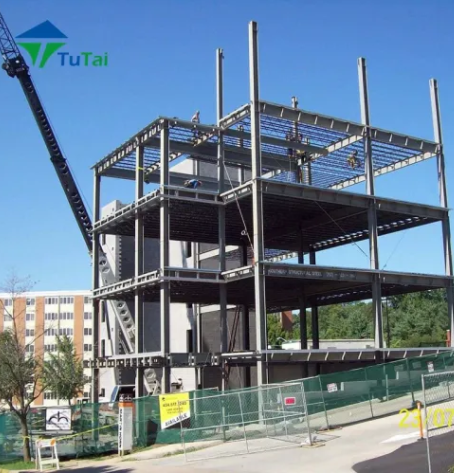What are the advantages of using steel frames in office buildings?
Introduction:
Steel has emerged as a popular choice for constructing office buildings, thanks to its numerous advantages over traditional construction materials. The inherent strength, durability, and flexibility of steel frames offer a range of benefits that contribute to the success and longevity of modern office spaces. In this article, we will explore the advantages of using steel frames in office buildings and how they positively impact various aspects of construction and occupancy.
Exceptional Strength and Structural Integrity:
One of the primary advantages of steel frames is their remarkable strength and structural integrity. Steel is known for its high load-bearing capacity, allowing for the construction of large and open office spaces without the need for excessive support columns. This strength enables architects and designers to create spacious layouts and incorporate expansive windows, maximizing natural light and creating a more comfortable and productive work environment.
Faster Construction Time:
Steel frame construction significantly reduces the overall construction time of office buildings compared to traditional methods. Precise fabrication and standardized components enable faster assembly and installation on-site. The speed of construction translates into lower labor costs, reduced project timelines, and quicker occupancy of the office space, providing businesses with a competitive edge in meeting their operational needs.
Cost-effectiveness:
Steel frames offer cost advantages throughout the entire life cycle of an office building. The prefabrication and streamlined construction process minimize material wastage, saving both time and money. Additionally, the durability and low maintenance requirements of steel frames contribute to long-term cost savings. With less need for repairs or replacements, office building owners can allocate resources to other critical areas of their business.
Design Flexibility and Adaptability:
Steel frames provide unparalleled design flexibility, allowing architects and designers to create unique and innovative office spaces. The lightweight nature of steel makes it easier to modify and expand the structure as business needs evolve. This adaptability is particularly valuable in today's dynamic and ever-changing office environments, where businesses may require reconfigurations or additions to accommodate growth or changes in operational requirements.
Sustainability and Environmental Benefits:
Steel is a highly sustainable and environmentally friendly construction material. It is 100% recyclable and can be reused or repurposed at the end of a building's life cycle. The use of steel frames reduces the consumption of other materials, minimizing waste and environmental impact. Moreover, steel's energy-efficient properties contribute to lower energy consumption, supporting the creation of sustainable and eco-friendly office spaces.
Resistance to Fire and Natural Hazards:
Steel frames offer excellent resistance to fire, making them a safe choice for office buildings. Steel does not burn or contribute to the spread of flames, providing occupants with valuable time to evacuate and minimizing property damage. Additionally, steel frames have high structural integrity, offering enhanced resistance to natural hazards such as earthquakes and severe weather conditions.
Conclusion:
The advantages of using steel frames in office buildings are manifold. From their exceptional strength and structural integrity to faster construction times, cost-effectiveness, and design flexibility, steel frames provide numerous benefits to building owners, occupants, and the environment. By embracing steel frame construction, office buildings can be constructed efficiently, sustainably, and with the ability to adapt to future needs, ensuring a productive and comfortable workspace for years to come.


Comments